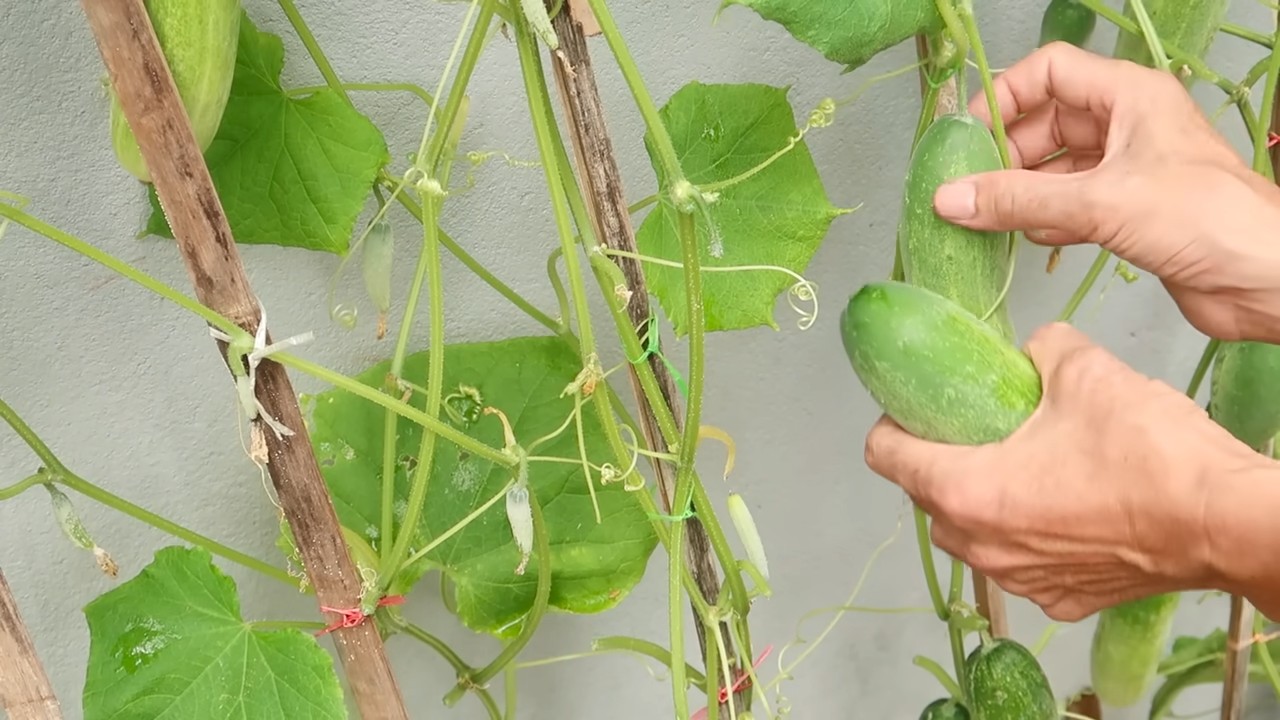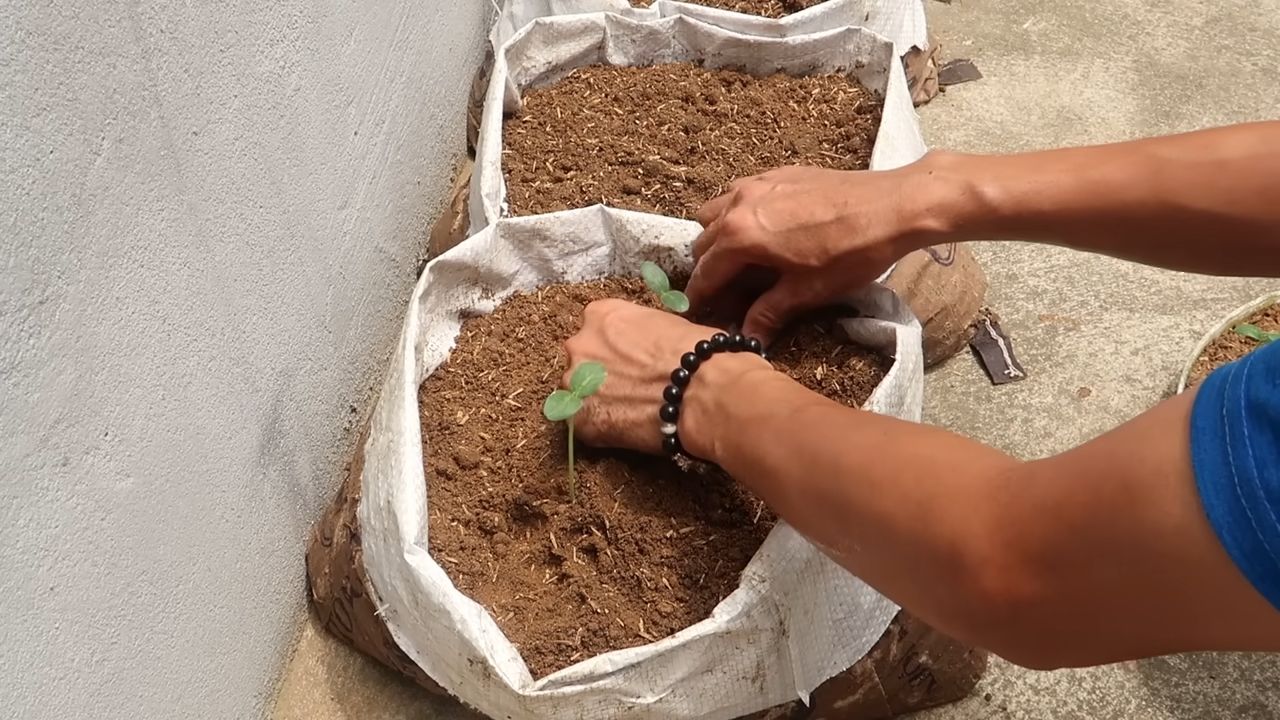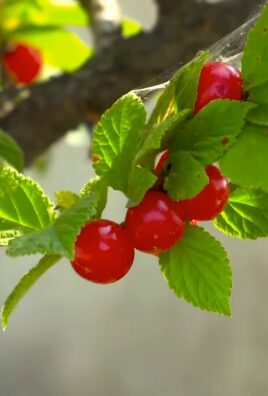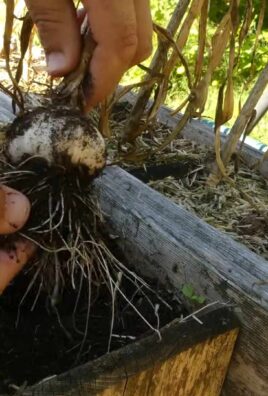Indoor Cucumber Growing: Imagine plucking a crisp, refreshing cucumber straight from the vine, right in your own living room! Sounds like a dream, doesn’t it? Well, it doesn’t have to be! For centuries, humans have cultivated plants indoors, from ancient Roman greenhouses to Victorian-era conservatories. But you don’t need a sprawling estate to enjoy the fruits (or vegetables!) of your labor.
In today’s busy world, finding time and space for a traditional garden can be a challenge. That’s where the magic of indoor cucumber growing comes in. This DIY guide will unlock the secrets to cultivating these delicious veggies within the cozy confines of your home. Whether you’re a seasoned gardener or a complete beginner, I’ll walk you through every step, from selecting the right cucumber variety to troubleshooting common problems.
Why should you try this? Because fresh, homegrown cucumbers are simply unbeatable! They taste better, are often more nutritious, and you have complete control over what goes into them. Plus, there’s something incredibly satisfying about nurturing a plant from seed to harvest. So, let’s ditch the store-bought cucumbers and embark on this exciting indoor gardening adventure together! Get ready to impress your friends and family with your green thumb and enjoy the taste of summer all year round.

Growing Cucumbers Indoors: A Comprehensive DIY Guide
Hey there, fellow plant enthusiasts! Ever dreamt of enjoying fresh, crisp cucumbers straight from your own home, even when the weather outside is frightful? Well, you’re in luck! Growing cucumbers indoors is totally achievable, and I’m here to guide you through every step of the process. It might seem daunting at first, but trust me, with a little patience and the right know-how, you’ll be harvesting delicious cucumbers in no time.
What You’ll Need: The Essential Supplies
Before we dive into the nitty-gritty, let’s gather our supplies. Having everything ready beforehand will make the whole process smoother and more enjoyable.
* Cucumber Seeds: Opt for bush or compact varieties specifically bred for container gardening. These are less space-hungry and more manageable indoors. Look for terms like “bush champion,” “spartan salad,” or “patio snacker.”
* Large Containers: Each cucumber plant needs at least a 5-gallon container. Bigger is generally better, as it provides more room for root growth. Make sure your container has drainage holes!
* High-Quality Potting Mix: Avoid using garden soil, as it can compact and hinder drainage. Choose a well-draining potting mix specifically formulated for vegetables.
* Grow Lights: Cucumbers need at least 6-8 hours of direct sunlight per day. If you don’t have a sunny windowsill, invest in a good-quality grow light. LED grow lights are energy-efficient and work wonders.
* Trellis or Support System: Even bush varieties benefit from some support. A small trellis, tomato cage, or even sturdy stakes will do the trick.
* Liquid Fertilizer: A balanced liquid fertilizer (like 10-10-10) will provide your plants with the nutrients they need to thrive.
* Watering Can or Hose: For, well, watering!
* Spray Bottle: For misting the leaves, which cucumbers love.
* Small Gardening Tools: A trowel for planting and small pruners for trimming.
Phase 1: Getting Started – Sowing the Seeds
Okay, let’s get our hands dirty! This is where the magic begins.
1. Prepare Your Containers: Fill your containers with the potting mix, leaving about an inch of space at the top. Gently tap the container to settle the soil.
2. Sow the Seeds: Plant 2-3 cucumber seeds per container, about 1 inch deep. Space them evenly.
3. Water Gently: Water the soil thoroughly but gently, making sure not to displace the seeds.
4. Create a Mini-Greenhouse (Optional): To speed up germination, you can cover the containers with plastic wrap or a clear plastic bag. This will create a humid environment. Just make sure to remove the cover once the seedlings emerge.
5. Place in a Warm Location: Cucumber seeds germinate best in warm temperatures (around 70-80°F). Place the containers in a warm spot, like near a radiator or on top of a refrigerator.
6. Be Patient: Germination usually takes about 5-10 days. Keep the soil consistently moist but not waterlogged.
Phase 2: Nurturing Your Seedlings – From Sprout to Strong Plant
Once your seedlings emerge, it’s time to provide them with the care they need to grow into strong, healthy plants.
1. Provide Adequate Light: As soon as the seedlings sprout, move them to a location with plenty of light. If you’re using grow lights, position them a few inches above the plants. Adjust the height as the plants grow.
2. Thin the Seedlings: Once the seedlings have developed a few true leaves (the second set of leaves), thin them to one plant per container. Choose the strongest, healthiest-looking seedling and gently snip off the others at soil level. Don’t pull them out, as this can disturb the roots of the remaining plant.
3. Water Regularly: Cucumbers need consistent moisture. Water deeply whenever the top inch of soil feels dry to the touch. Avoid overwatering, as this can lead to root rot.
4. Fertilize Regularly: Start fertilizing your cucumber plants about two weeks after they emerge. Use a balanced liquid fertilizer diluted to half strength. Fertilize every 2-3 weeks.
5. Provide Support: As your cucumber plants grow, they’ll need support. Install a trellis, tomato cage, or stakes to help them climb. Gently tie the vines to the support as they grow.
6. Maintain Humidity: Cucumbers thrive in humid environments. Mist the leaves regularly with a spray bottle, especially during dry weather. You can also place a tray of water near the plants to increase humidity.
7. Pinch Off Suckers: “Suckers” are small shoots that grow from the base of the plant or where the leaves meet the stem. Pinching these off encourages the plant to focus its energy on producing fruit.
Phase 3: Pollination – The Key to Cucumber Production
Cucumbers are monoecious, meaning they have separate male and female flowers on the same plant. The female flowers need to be pollinated in order to produce fruit. Indoors, we need to play the role of the bees!
1. Identify Male and Female Flowers: Male flowers have a long, slender stem, while female flowers have a small, immature cucumber behind the flower.
2. Hand-Pollination: The easiest way to pollinate your cucumbers indoors is by hand. Use a small paintbrush or cotton swab to collect pollen from the male flowers. Gently brush the pollen onto the stigma (the sticky part) of the female flowers.
3. Timing is Key: Pollinate your cucumbers in the morning, when the flowers are most receptive.
4. Repeat Daily: Pollinate your cucumbers every day until you see the small cucumbers start to grow.
5. Parthenocarpic Varieties: If hand-pollination seems like too much work, you can choose parthenocarpic cucumber varieties. These varieties produce fruit without pollination, so you don’t have to worry about hand-pollinating. Look for varieties like “English Telegraph” or “Spacemaster.”
Phase 4: Harvesting and Enjoying Your Homegrown Cucumbers
The moment you’ve been waiting for! Harvesting your own cucumbers is incredibly rewarding.
1. Harvest at the Right Size: Harvest your cucumbers when they reach the desired size for the variety you’re growing. Check the seed packet for specific information.
2. Use Sharp Pruners: Use sharp pruners or a knife to cut the cucumbers from the vine. Leave a small piece of stem attached.
3. Harvest Regularly: Harvesting regularly encourages the plant to produce more fruit.
4. Store Properly: Store your cucumbers in the refrigerator for up to a week.
5. Enjoy! Savor the taste of your homegrown cucumbers in salads, sandwiches, or as a refreshing snack.
Troubleshooting: Common Issues and Solutions
Even with the best care, you might encounter some challenges along the way. Here are some common issues and how to address them:
* Yellowing Leaves: This could be a sign of overwatering, underwatering, nutrient deficiency, or pest infestation. Check the soil moisture, fertilize regularly, and inspect the plants for pests.
* Powdery Mildew: This fungal disease appears as a white, powdery coating on the leaves. Improve air circulation, avoid overhead watering, and treat with a fungicide if necessary.
* Aphids: These small, sap-sucking insects can weaken your plants. Spray them off with a strong stream of water or use insecticidal soap.
* Lack of Fruit Production: This could be due to insufficient pollination, lack of sunlight, or nutrient deficiency. Make sure you’re hand-pollinating regularly, providing adequate light, and fertilizing properly.
* Bitter Cucumbers: Bitterness can be caused by stress, such as inconsistent watering or high temperatures. Provide consistent care and choose varieties that are less prone to bitterness.
Choosing the Right Cucumber Variety for Indoor Growing
Selecting the right cucumber variety is crucial for success when growing indoors. As I mentioned earlier, bush or compact varieties are generally the best choice because they require less space and are well-suited for container gardening. Here are a few specific varieties that I’ve had good luck with:
* Bush Champion: This is a classic bush variety that produces high yields of crisp, flavorful cucumbers.
* Spacemaster: As the name suggests, this variety is very compact and ideal for small spaces. It produces dark green cucumbers that are perfect for slicing.
* Patio Snacker: This variety is specifically bred for container gardening and produces small, snack-sized cucumbers.
* Salad Bush: Another great bush variety that produces abundant yields of medium-sized cucumbers.
* English Telegraph (Parthenocarpic): If you want to

Conclusion
So, there you have it! Mastering the art of indoor cucumber growing is not only achievable but also incredibly rewarding. We’ve walked you through the essential steps, from selecting the right variety to providing optimal light and support. But why should you embark on this green adventure?
Firstly, growing cucumbers indoors extends your harvest season. Forget relying solely on summer’s bounty; with a little planning and effort, you can enjoy fresh, crisp cucumbers practically year-round. Imagine adding homegrown cucumbers to your winter salads or enjoying a refreshing cucumber sandwich in the middle of January. The taste of a cucumber you’ve nurtured from seed to fruit is simply unmatched by anything you can buy in a store.
Secondly, indoor cucumber growing offers a fantastic opportunity to connect with nature, even if you live in an apartment or have limited outdoor space. The process of tending to your plants, watching them grow, and finally harvesting your own food is incredibly therapeutic and satisfying. It’s a chance to slow down, appreciate the simple things, and learn about the wonders of plant life.
Thirdly, it’s a cost-effective way to enjoy fresh produce. While there’s an initial investment in seeds, pots, and potentially a grow light, the long-term savings can be significant, especially if you regularly buy cucumbers. Plus, you’ll be reducing your carbon footprint by growing your own food locally.
But the benefits don’t stop there. Indoor cucumber growing allows you to control the growing environment, minimizing the risk of pests and diseases that can plague outdoor gardens. You can tailor the conditions to suit your plants’ needs, ensuring optimal growth and a bountiful harvest.
Now, let’s talk about variations. Feel free to experiment with different cucumber varieties. Bush varieties are particularly well-suited for indoor growing, as they require less space. You can also try growing different types of cucumbers, such as pickling cucumbers or slicing cucumbers, depending on your preferences.
Consider adding companion plants to your indoor cucumber garden. Basil, for example, can help repel pests and improve the flavor of your cucumbers. Marigolds are another great option, as they attract beneficial insects and add a splash of color to your growing space.
Don’t be afraid to get creative with your trellising system. While a simple tomato cage or trellis will work, you can also build your own custom trellis using bamboo stakes or other materials. This is a great way to personalize your indoor garden and make it a focal point in your home.
Finally, remember that indoor cucumber growing is a learning process. Don’t be discouraged if you encounter challenges along the way. Every gardener, even experienced ones, faces setbacks from time to time. The key is to learn from your mistakes, adapt your approach, and keep experimenting.
So, what are you waiting for? Grab some seeds, prepare your pots, and get ready to embark on your indoor cucumber growing adventure. We’re confident that you’ll be amazed by the results.
We encourage you to try this DIY trick and share your experience with us. Post photos of your indoor cucumber garden on social media using #IndoorCucumberGrowing and tag us so we can see your amazing results! We can’t wait to see what you create. Happy growing!
Frequently Asked Questions (FAQ)
What are the best cucumber varieties for indoor growing?
The best cucumber varieties for indoor growing are typically bush or compact varieties that don’t require extensive vining. Some excellent choices include:
* Spacemaster: A compact bush variety that produces high yields of dark green cucumbers.
* Bush Champion: Another bush variety that’s known for its disease resistance and early maturity.
* Salad Bush: A compact variety that produces small, sweet cucumbers perfect for salads.
* Patio Snacker: A hybrid variety specifically bred for container growing, producing small, snack-sized cucumbers.
* Little Leaf: This variety has smaller leaves, allowing for better light penetration and air circulation, making it ideal for indoor environments.
When selecting a variety, consider the size of your growing space and the type of cucumbers you prefer.
How much light do indoor cucumbers need?
Cucumbers need at least 6-8 hours of direct sunlight per day to thrive. If you don’t have a sunny window, you’ll need to supplement with a grow light. LED grow lights are a great option, as they’re energy-efficient and provide the full spectrum of light that plants need. Position the grow light a few inches above the plants and adjust as they grow. Insufficient light can lead to leggy growth, reduced flowering, and smaller yields.
What kind of soil should I use for indoor cucumbers?
Use a well-draining potting mix that’s rich in organic matter. A mix of peat moss, perlite, and vermiculite is a good option. Avoid using garden soil, as it can be too heavy and may contain pests or diseases. You can also add compost or other organic amendments to improve the soil’s fertility and drainage. Ensure the pot has drainage holes to prevent waterlogging.
How often should I water my indoor cucumbers?
Water your cucumbers regularly, keeping the soil consistently moist but not soggy. Check the soil moisture level daily and water when the top inch feels dry to the touch. Avoid overwatering, as this can lead to root rot. During hot weather, you may need to water more frequently. Use a watering can or hose with a gentle spray to avoid damaging the plants.
How do I pollinate my indoor cucumbers?
Cucumbers are monoecious, meaning they have separate male and female flowers on the same plant. Indoors, you’ll need to hand-pollinate the flowers to ensure fruit production. Use a small paintbrush or cotton swab to transfer pollen from the male flowers to the female flowers. The female flowers have a small cucumber-like structure at the base, while the male flowers do not. Pollinate the flowers in the morning, when the pollen is most viable. You can also use a small fan to circulate air around the plants, which can help with pollination.
What are some common pests and diseases that affect indoor cucumbers?
Common pests that can affect indoor cucumbers include aphids, spider mites, and whiteflies. Regularly inspect your plants for signs of infestation and take action promptly. You can use insecticidal soap or neem oil to control these pests. Common diseases include powdery mildew and fungal infections. Ensure good air circulation and avoid overwatering to prevent these diseases. You can also use a fungicide if necessary.
How do I fertilize my indoor cucumbers?
Fertilize your cucumbers every 2-3 weeks with a balanced fertilizer. Look for a fertilizer that’s specifically formulated for vegetables or tomatoes. Follow the instructions on the fertilizer label carefully. You can also use a liquid fertilizer, which is easy to apply and quickly absorbed by the plants. Avoid over-fertilizing, as this can lead to excessive foliage growth and reduced fruit production.
How do I prune my indoor cucumbers?
Pruning can help improve air circulation and light penetration, leading to healthier plants and better yields. Remove any yellowing or dead leaves. You can also prune the side shoots that grow from the main stem. This will encourage the plant to focus its energy on producing fruit. If you’re growing a vining variety, you may need to prune the vines to keep them from becoming too unruly.
How long does it take for indoor cucumbers to mature?
The time it takes for indoor cucumbers to mature depends on the variety and growing conditions. Generally, it takes about 50-70 days from planting to harvest. You can harvest the cucumbers when they’re the desired size and color. Check the seed packet or plant label for specific information on the maturity time for your chosen variety.
Can I grow cucumbers indoors year-round?
Yes, you can grow cucumbers indoors year-round, provided you have the right growing conditions. You’ll need to provide adequate light, warmth, and humidity. You may also need to adjust your watering and fertilizing schedule depending on the season. With a little planning and effort, you can enjoy fresh, homegrown cucumbers all year long.




Leave a Comment